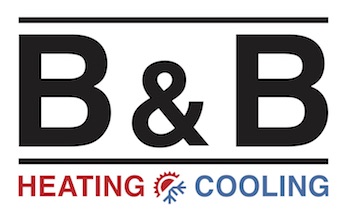
If you’re needing air conditioner installation in Florissant and St. Charles, you should also be looking at your new air conditioner’s SEER rating.
SEER is short for Seasonal Energy Efficiency Rating. In a nutshell, it measures how efficient your air conditioner is at turning electricity into chilled air. A bigger number signifies your air conditioner is more efficient, which is excellent for your cooling bills.
However, there are a lot of different options out there for air conditioners. And a greater SEER number typically includes a higher price tag. So, how can you find out which one is ideal for your house?
At B & B Heating & Cooling, we give you a free, no-pressure home comfort analysis. You can get one by contacting us at 314-325-7552. Our skilled air conditioner installers will partner with you to help you pick the right air conditioner for your home. Plus, they’ll also offer you a free, no-obligation estimate.
Right now, let’s discuss SEER ratings and how they can affect your home’s comfort. And your electric bills.
What Does the SEER Rating Really Matter?
In 2016, the federal government created new SEER criteria. New air conditioners are required to be at minimum 13 SEER in the north United States and 14 SEER in the southeast and southwest. If you don’t know when you had your air conditioner installed or what its SEER number is, you can check the sticker on the system outside your home. If you can’t see the sticker, you can give us a call at 314-325-7552 for support.
If your air conditioner was put in prior to that year, it’s presumably much less efficient. Cooling technology has quickly changed in the past couple of years, with big breakthroughs in energy efficiency and smart home capacity. Using your new air conditioner with a smart thermostat could help you conserve more on electric expenses, because the thermostat can intuitively regulate your temperature settings when you’re away.
If your existing air conditioner has a SEER rating between 8 and 10, adding a 14-SEER system could save you an estimated 30–50% on annual cooling expenses. Your savings are tied to your air conditioner size and your temperature settings.
Is a Higher SEER Rating Always Better?
An air conditioner with a higher SEER rating will be more efficient at consuming electricity for cooling. The best efficient models, which can go as high as 26 SEER, carry ENERGY STAR® certification. This certification shows the air conditioner has achieved EPA rules for energy savings and environmental conservation.
While ENERGY STAR air conditioners are frequently pricier, you’ll usually get the difference repaid over time through cheaper electrical expenses. These air conditioners, which are frequently rated 16 SEER and better, consume about 8% less energy than other new systems, according to ENERGY STAR.
One of the biggest differences between a 14 SEER and 16 SEER is variable-speed capability. A variable-speed air conditioner can cool at different speeds. This refines comfort for your house while keeping your energy costs reduced. It can also keep temperatures and humidity more balanced, since it can operate for longer without requiring a lot more electricity.
When adding a variable-speed air conditioner, you’ll need to make sure that your furnace or air handler is compatible. This is because your air conditioner uses this unit’s blower to distribute chilled air throughout your residence. Furnaces only last for around 20 years, so if yours is getting old, we recommend furnace installation at the same time so you can enjoy all the perks of your variable-speed air conditioner.
When you’re set to replace your air conditioner, the cooling specialists at B & B Heating & Cooling are available to support you. Reach us at 314-325-7552 to request your free home comfort analysis today.
